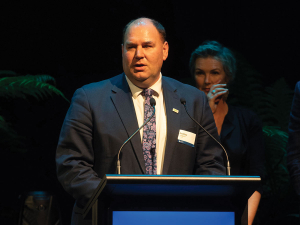But that doesn’t make this initiative any less laudable. Despite a certain TV advertising campaign bragging “big is good”, in the eyes of most New Zealanders, big is good only when it suits them. Sadly most don’t realise, or perhaps just don’t want to admit, that Fonterra’s size is actually good for them too. It gives our dairy industry the muscle and resource it needs to compete on the world market which is, after all, where 95% of the milk ends up. That strength helps improve the milk price and dividend paid to shareholders, which flows through our economy. It also makes our farmers better able to compete with overseas buyers. Bet most of the general public haven’t thought of it like that.
Hopefully the school milk initiative will make people think twice before they have a dig at the dairy industry. Fonterra needs to be careful here though, because it mustn’t be seen to be trying to buy off the public, in an attempt to bury the dirty dairy bad press. Such press has to be taken on the chin when it’s justified, and soundly refuted when it’s not. There’s also the danger some will see the Milk for Schools programme as a sign Fonterra is making so much money it can afford to give milk away.
Meanwhile Federated Farmers held its Farm Day on Sunday, and the Get Ahead agricultural careers day taster programme kicks off next week in Te Awamutu. Both should help open the eyes of the nation’s youth to the opportunities agriculture holds, but only to those who attend. It’s likely in many cases they’ll already be on board with what’s available in farming and its ancillary industries.
One way to reach others who have little to do with farming is through schools, which is where hopefully the Fonterra Milk for Schools programme will start to deliver.
Meanwhile sector bodies need to be looking to educate the educators, getting teachers out to field days, awards evenings, dinners – whatever it takes, but with activities designed with teachers in mind.
It’s a profession that is traditionally somewhat left-wing, so it will be no easy task, but if agriculture wants to change the attitude of the next generation, this is a good place to start.
















